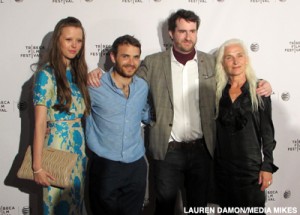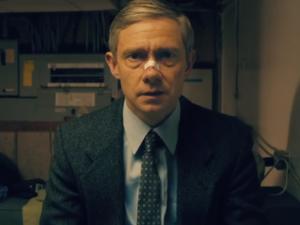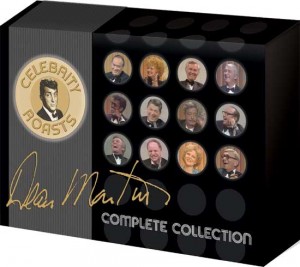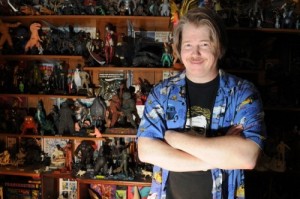Charles Martin Smith is probably best known to film fans for his role as Terry “the Toad” Fields, everybody’s favorite tag along in “American Graffiti.” The son of animator Frank Smith (“Mr. Magoo,” “A Charlie Brown Christmas”), Smith began his acting career appearing in school productions. His early work includes “The Culpepper Cattle Company,” starring Gary Grimes and his soon to be “Graffiti” co-star Bo Hopkins as well as an appearance as the young man who sells Greg Brady a lemon of a car on “The Brady Bunch.” But it was “American Graffiti” that made him an actor to remember. He spent the majority of the 1970s making guest appearances in most of the popular television series of the time. He also returned to the role of Terry the Toad in “More American Graffiti” and co-starred with Gary Busey and Don Stroud in the Oscar winning bio “The Buddy Holly Story.” In 1983 he starred in director Carroll Ballard’s acclaimed film “Never Cry Wolf.” It was on this film that Mr. Smith tried his hand at writing, composing his own narration for the film. He closed the decade with co-starring roles in “The Untouchables” and the under-rated John Travolta comedy “The Experts.”
In 1986 he entered the next phase of his career when he went behind the camera, directing Gene Simmons and Ozzy Osbourne in the horror-comedy “Trick or Treat.” He continued to direct episodic television programs, including “Buffy the Vampire Slayer,” “Space: Above and Beyond” and “DaVinci’s Inquest” while still feeding the acting bug. In 2003 he wrote and directed the film “Snow Walker,” which starred Barry Pepper and James Cromwell. The film was a film festival success, earning Mr. Smith numerous nominations for Best Director and Best Screenplay. His follow up, “Stone of Destiny,” was equally acclaimed, earning Mr. Smith the Best Director award at the Palm Beach International Film Festival as well as a BAFTA Scotland Award nomination. His current project, “Dolphin Tale,” is set for release this fall.
It was while doing post-production work on “Dolphin Tale” that Mr. Smith spared a few minutes to talk with MovieMikes about his career.
Mike Smith: Your father was a very successful animator. Did his work inspire you to seek an acting career?
Charles Martin Smith: My father was a successful animator, so growing up in Los Angeles I was around films as a child. But not around live action films, so that world still seemed mysterious and inaccessible to me. It was a great benefit, though, to live in LA, and to go to University here, as I did, at CSUN. I had great acting and directing teachers and had access to an agent, etc. My father, more than anything, taught me about art, and his amazing creativity and perfectionism as an artist…he was a sculptor and designer, and did many things besides cartoons…he taught me a lot.
MS: Your first television role was as the young man who sold Greg Brady a junk car on “The Brady Bunch.” Have you ever thought about buying something and then thought “caveat emptor?”
CMS: Caveat emptor? Ha, no not really. That was technically my second TV role. My first was a special also involving the Brady Bunch. It was made by ABC to advertise their new season of Saturday morning cartoons. I got those roles right after my first professional acting job, “The Culpepper Cattle Company”, a western for 20th Century Fox.
MS: You and Ron Howard were the only two actors in “American Graffiti” that were actually close to high school age when it was filmed. Did you have any idea that this little film would strike such a chord with the public?
CMS: “Graffiti” was a low budget film but it had a good pedigree. Francis (Ford Coppola) was the producer, and Universal was behind the film, at least to a limited extent. And George Lucas had a lot of buzz and hype about him. After “THX-1138” he was considered a hot young director. All of the actors in the film (and you’re right, Ron and I were both 18), believed in the movie, and in George. We were thrilled to be part of such a good project, as the script was excellent, and, as I say, George was so talented. We thought the movie would be very good, we just weren’t sure it would get noticed as it was so low budget.
MS: Did you already know how to play bass when you took the role of Ray Bob in “The Buddy Holly Story?” And did you ever meet or speak with Joe B. Maudlin (NOTE: Maudlin was Buddy Holly’s bass player in the Crickets), on who the character was based?
CMS: Yes. I had been a musician since age 8 when I began learning piano, then guitar, and all during my teenage years I was in rock and roll bands, joining my older brother Dan’s band while in high school. We played gigs all around LA. I played guitar mostly in the band. Dan is a bass player, and a very good one, although his career since he got his Doctorate in Public Health has been as a research scientist for the California Health Department. I gave up thoughts of a music career when I began getting acting gigs, but “Buddy Holly” was a natural for me. I had played around with my brother’s bass many times, and as a guitar player, it wasn’t too hard to learn it. I got the stand up bass 2 months before we began filming and taught myself to play. I played all the music in the film live, and sang backup vocals live as well. Great fun. I did meet Joe B at the film’s premier in Dallas. He was very nice…shy, and it was a bit awkward as they had mixed feelings about the movie. They meaning himself and Jerry Allison (NOTE: Allison was the drummer for the Crickets). But it was great to meet him, and I even got his autograph!
MS: In my opinion, “More American Graffiti” is very under appreciated. Do you have any ideas why it wasn’t as well received as “American Graffiti?”
CMS: Well, I think it didn’t strike a chord with people the way “American Graffiti” did. I think George had a better story and grasp of the 50s than he did of the 60s. I loved my role in it and the Vietnam story in the sequel was the best written part of the script, I think. I’m very proud of that movie.
MS: You were critically acclaimed (and deservedly so) for your performance in “Never Cry Wolf.” What are your memories about that production?
CMS: “Never Cry Wolf” was an amazing experience. I spent three years on the film. I could write a book about the experience. We filmed for one and a half years, largely without a script. Carroll Ballard is a very gifted artist, and it’s probably the most wonderful experience I’ve ever had in a film. He invited me to write the narration as well, and I was on the film all the way through post production. I could not have ever directed a film without having had that experience with him. He taught me so much, and I’m extremely proud of that film.
MS: You gave another acclaimed performance in “The Untouchables.” Was your character based on a real member of Elliot Ness’ team?
CMS: My character in “The Untouchables” was a sort of amalgam of a few people in the US Government who went after Al Capone, so no, it was not really based on a real person. It was a fun character though, and the shoot was a great experience. I learned an enormous amount from (director Brian) De Palma, and from Sean Connery. I saw Sean two years ago in Scotland as my film “Stone of Destiny” premiered at the Edinburgh Film Festival. Sean was the host of the evening, so it was a great reunion.
MS: You’ve grown into a successful writer/director. Do you have a preference of being in front of or behind the camera?
CMS: I enjoy both acting and writing/directing. I do love writing, and although it may be a surprise to people, I have actually done quite a bit of work as a writer, without acting or directing. I love making films, writing and directing them, but must confess that it’s much more stressful and challenging. Sometimes it’s nice to be an actor, without having to carry the burden of the whole film, and just to be able to focus on that job. I love being able to trade off.
MS: Can you tell us about your latest project, “Dolphin Tale?”
CMS: “Dolphin Tale” is based on a true story about Winter, a dolphin who was rescued in Florida. She was so badly injured that she eventually lost her tail. This is how dolphins swim of course, so her rescuers finally hit upon the idea of making a prosthetic tail for her. It’s a very heartwarming and emotional story, and in writing it, and directing it, I tried to tell a good story, with humor and heart. I was very honored to be able to shoot it with Winter playing herself! It’s a sweet film, and we will be in the theatres Sept 23, released by Warner Brothers.







